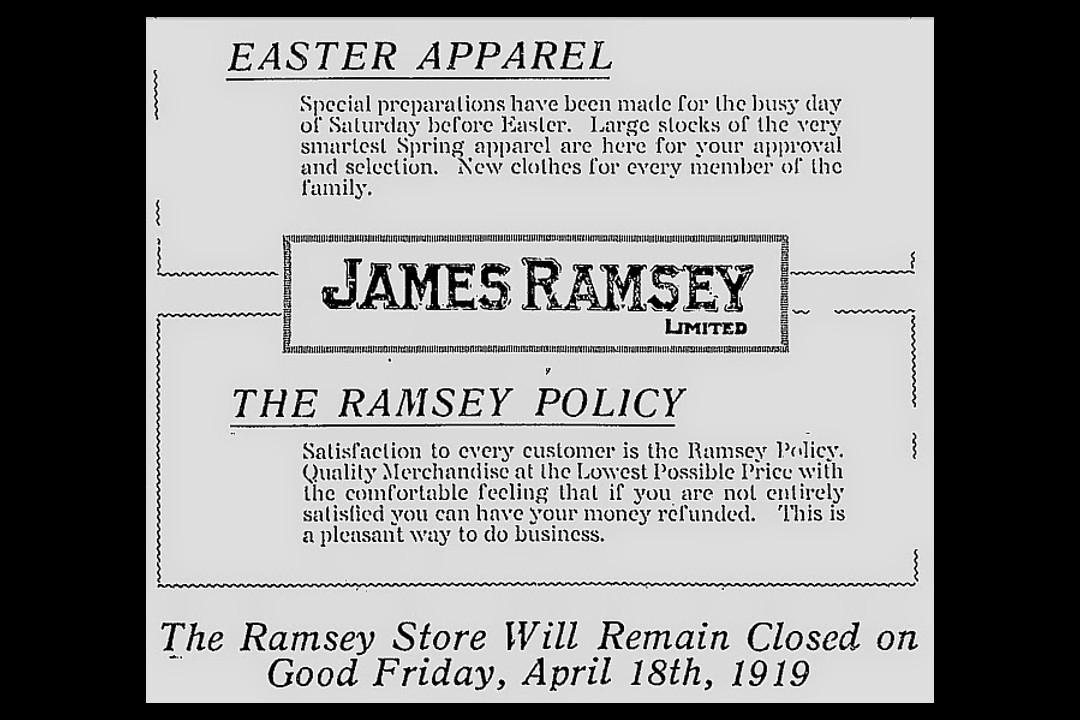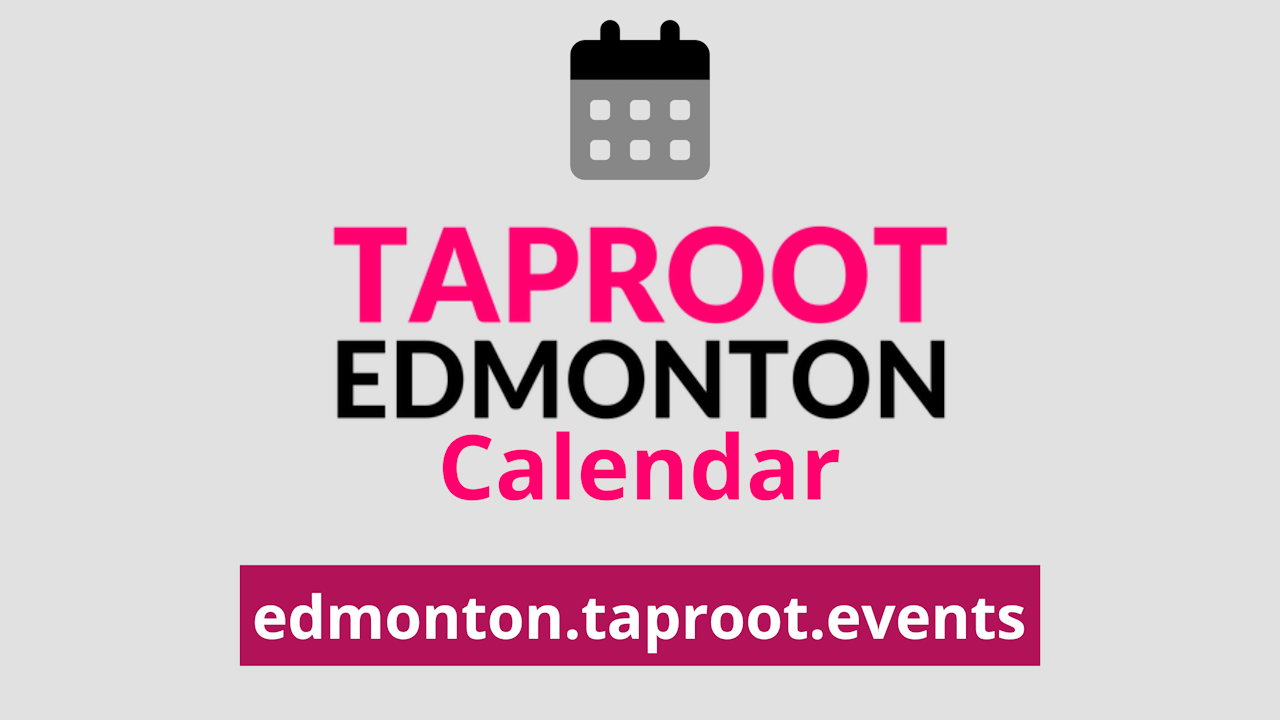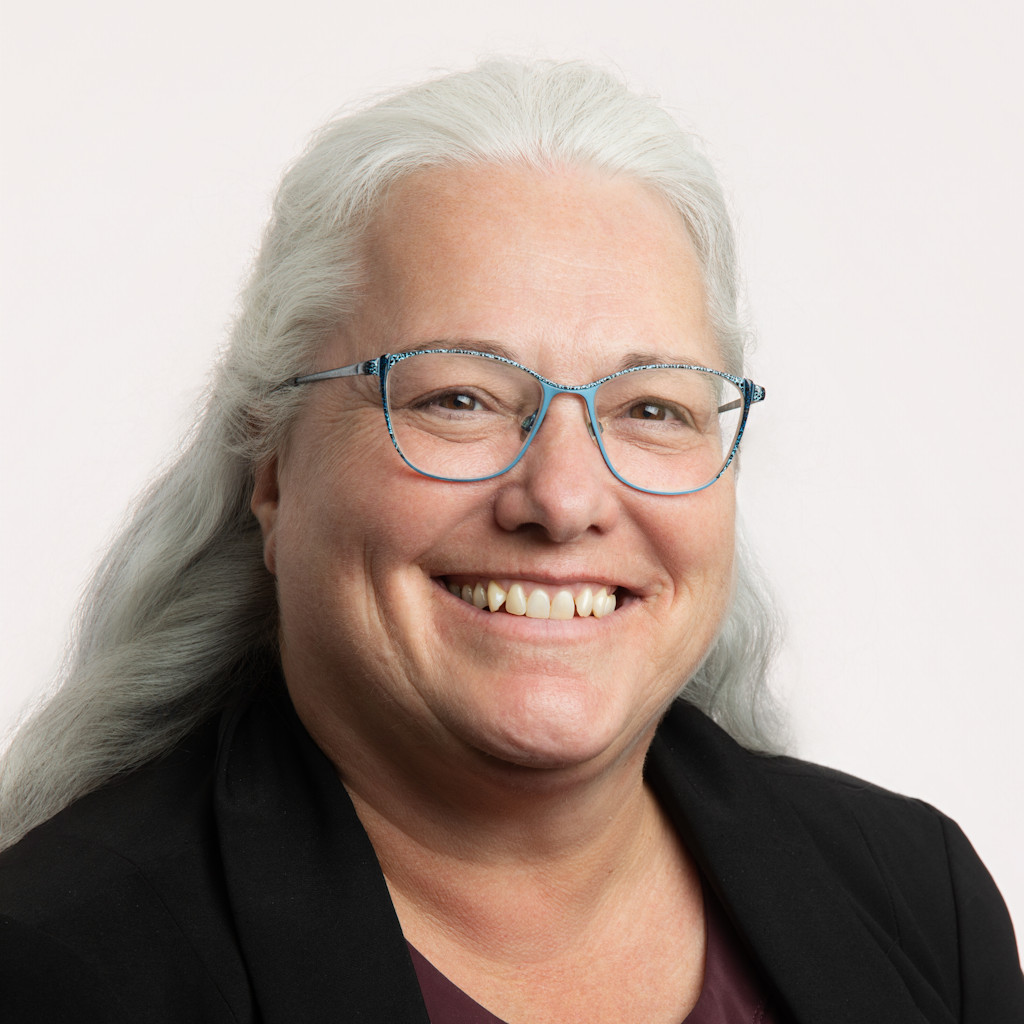On this day in 1919, James Ramsey, otherwise known as Edmonton's "Merchant Prince," was selling Easter clothes.
Ramsey shaped the way shopping worked in Edmonton, but the foundations of what became his retail kingdom began thousands of kilometres away. He was born in 1864 in Michigan. His family soon moved to Ontario. He was just 13 years old when he got his first retail job, working in a general store in Plattsville, Ontario. From there, he built connections in Toronto, Montreal, and New York.
In 1910, Ramsey made his first trip to Edmonton and was impressed by the business potential in the growing city. It was on that trip that he linked up with real-estate investor Robert Tegler, who was planning a massive new modern office block for the city. Ramsey returned to Ontario, but it wasn't long before Tegler reached out with a good offer to lease the bottom floor of his new building to Ramsey, who would establish a retail store. Ramsey packed up and moved to Edmonton.
When the James Ramsey Ltd. department store opened in 1911, it became an overnight success. Literally. It cost Ramsey around $19,000 to construct and stock his store — but it brought in almost half that amount in sales on its opening day alone.
Ramsey used his extensive retail experience to change the way Edmontonians spent their money. While most local shopkeepers would round prices up to the nearest five cents, Ramsey priced his goods down to the specific cent. This forced shoppers to adopt using pennies, which until then had mainly been ignored in the city. He also offered mail-order shopping and produced semi-annual catalogues, which reached customers in the rural areas that surrounded the city.
His tactics worked. From the beginning, the store was almost constantly expanding. The store grew larger in 1912, and once again in 1913, when an eight-storey expansion was added to the Tegler Building. And then it grew once again, in 1914, when Ramsey made a deal with John Kelly, a blacksmith-turned-developer who had just constructed the Kelly Building next door. Ramsey leased out the first floor of Kelly's building to continue expanding his retail offerings.
By the 1920s, Ramsey ran one of the largest department stores in western Canada — sprawling 175,000 square feet and employing hundreds. It housed more than 20 different departments — everything from groceries to furniture, to building supplies and clothing. In 1927, Ramsey built a final expansion to his store. While the new expansion was added to the Kelly Building, it was done in a different style from the original and became known as the Ramsey Block.
Not content with just being a businessman, Ramsey also succeeded as a politician. He was first elected as an Edmonton alderman in 1914. After his two-year term, he set sights on provincial politics. He was elected as the representative for Edmonton East in 1917 and took over as leader of the province's Conservative party for about a year. Ramsey's decade-long stint in politics came to an end in 1923, when he failed to win in a run for mayor of Edmonton.
In 1928, Ramsey ended his reign as the Merchant Prince of Edmonton (a nickname whose origins have been lost). He sold the department store to the Eaton Company for $1 million (about $17.5 million in 2024 dollars). Then, Ramsey did what so many of us would do if we had a vast fortune, by retiring somewhere much warmer. Ramsey moved to the Bahamas and was there until his death in 1939.
The year after his death, the Alberta government purchased the Kelly Building and Ramsey Block, then sold them to a private company. While the Tegler Building was demolished in 1982, the Kelly Ramsey Building remained on Rice Howard Way as a reminder of one of Edmonton's most storied and enduring businesses. However, in 2009, a fire linked to arson gutted the building, damaging it enough to force tenants to move. It remained empty until 2013 when it was demolished.
But the Kelly Ramsey Building rose again, at least partially. Construction soon began on the 25-storey Enbridge Centre on the site. The original brick and granite of the Kelly Ramsey building, saved during its demolition, were used on the three-storey podium of the new office tower, preserving some of the site's history as a centre of commerce. The building might soon become part of a new attraction in Edmonton, as the city has proposed turning Rice Howard Way into a pedestrian-only entertainment district.
This clipping was found on Vintage Edmonton, a daily look at Edmonton's history from armchair archivist @revRecluse of @VintageEdmonton.







